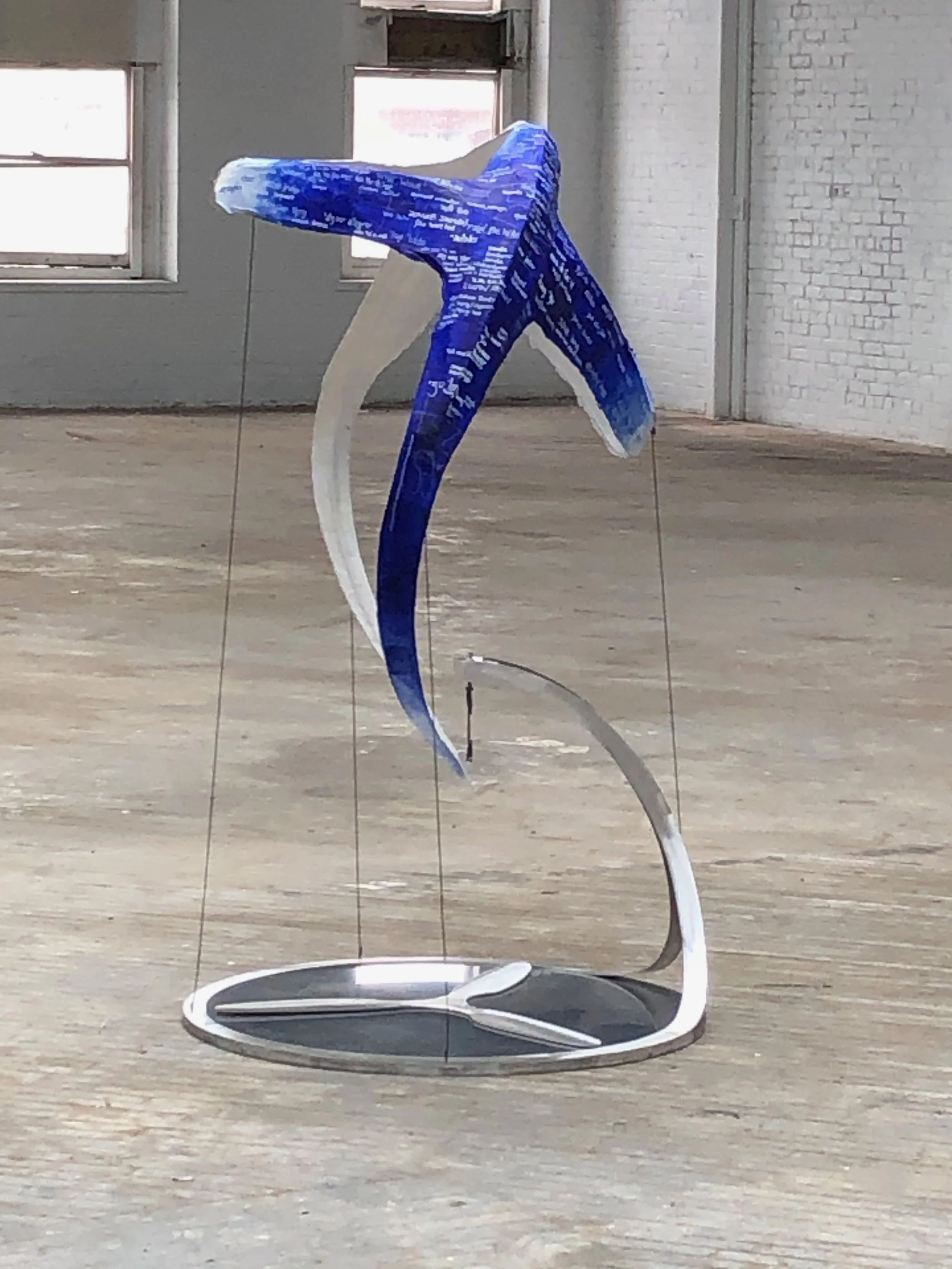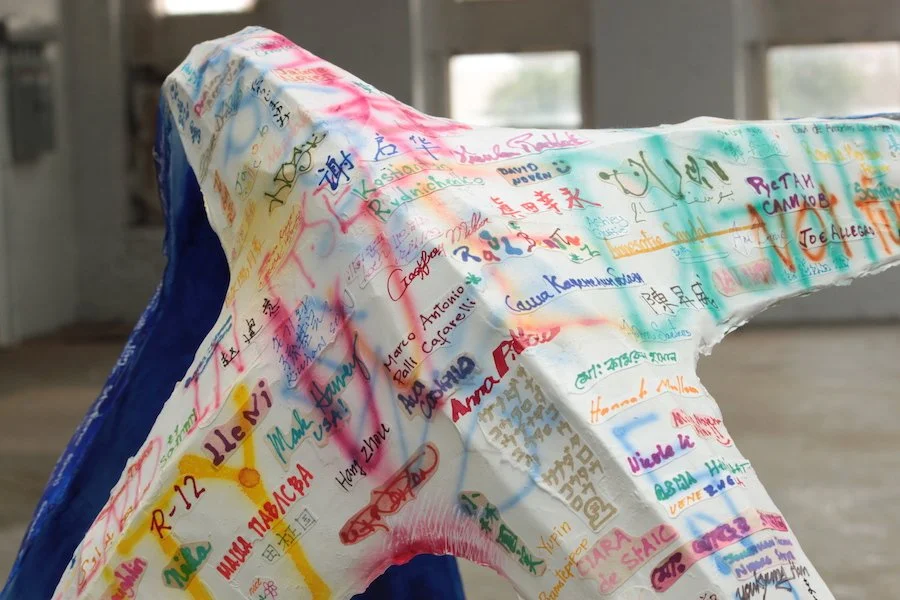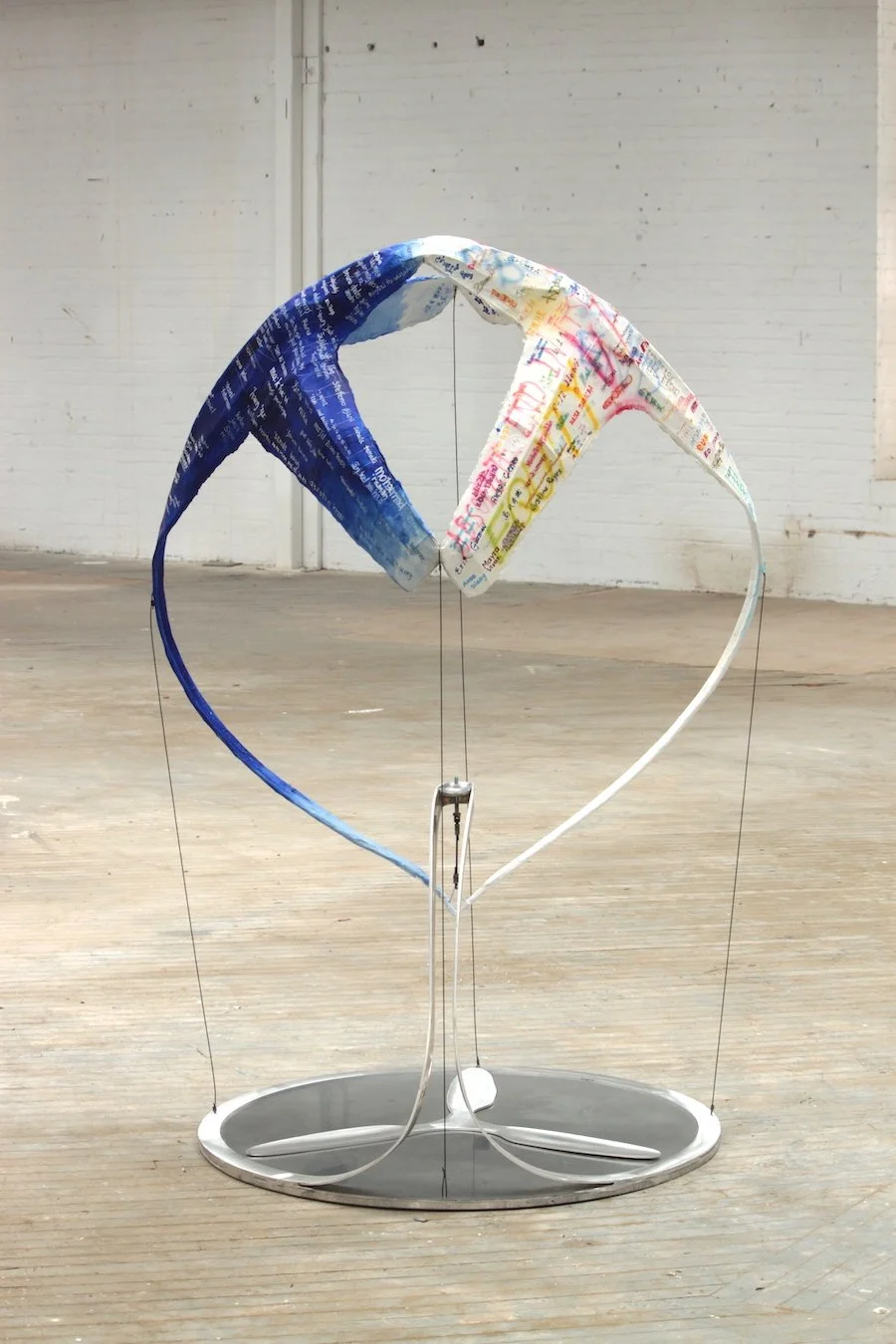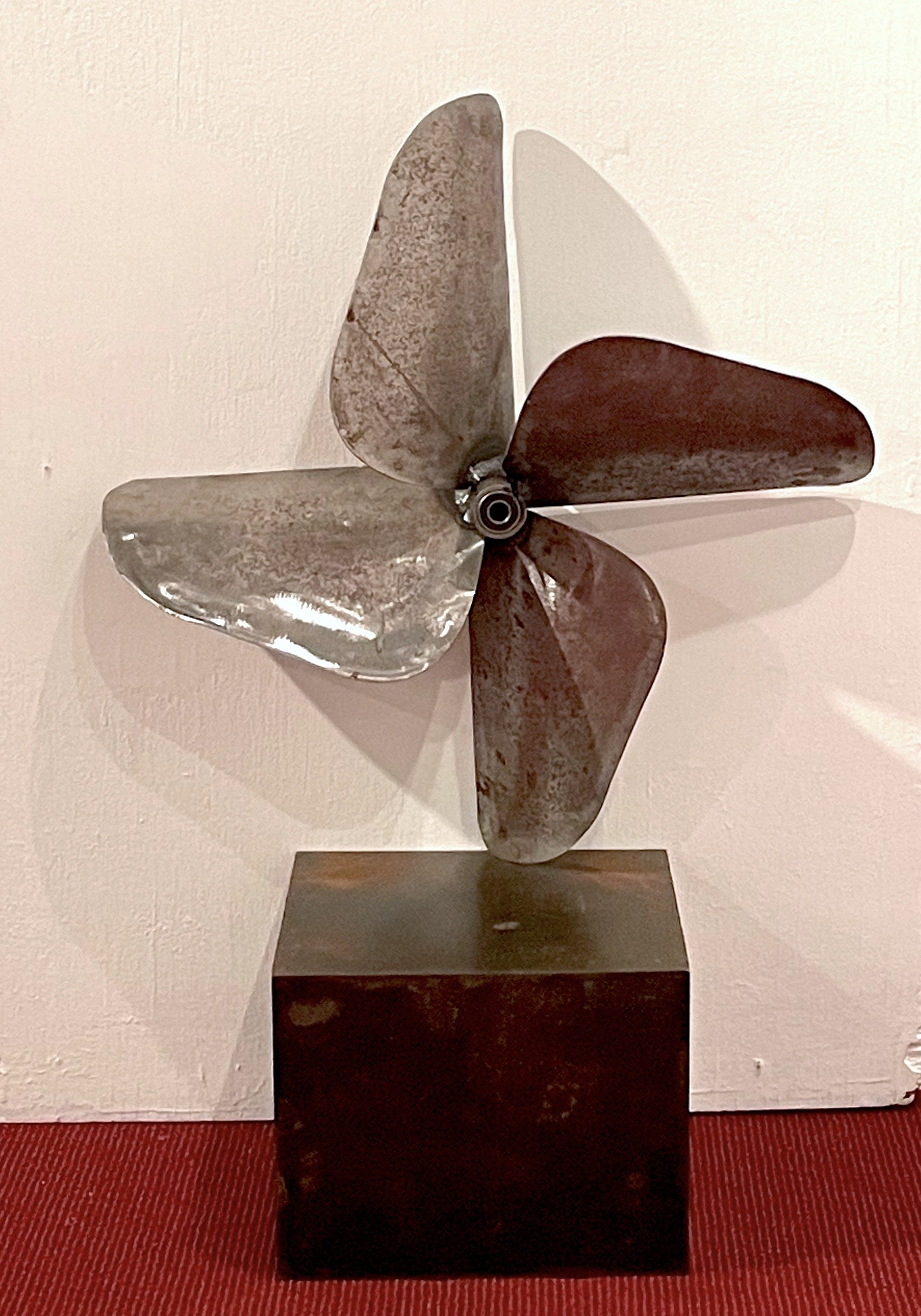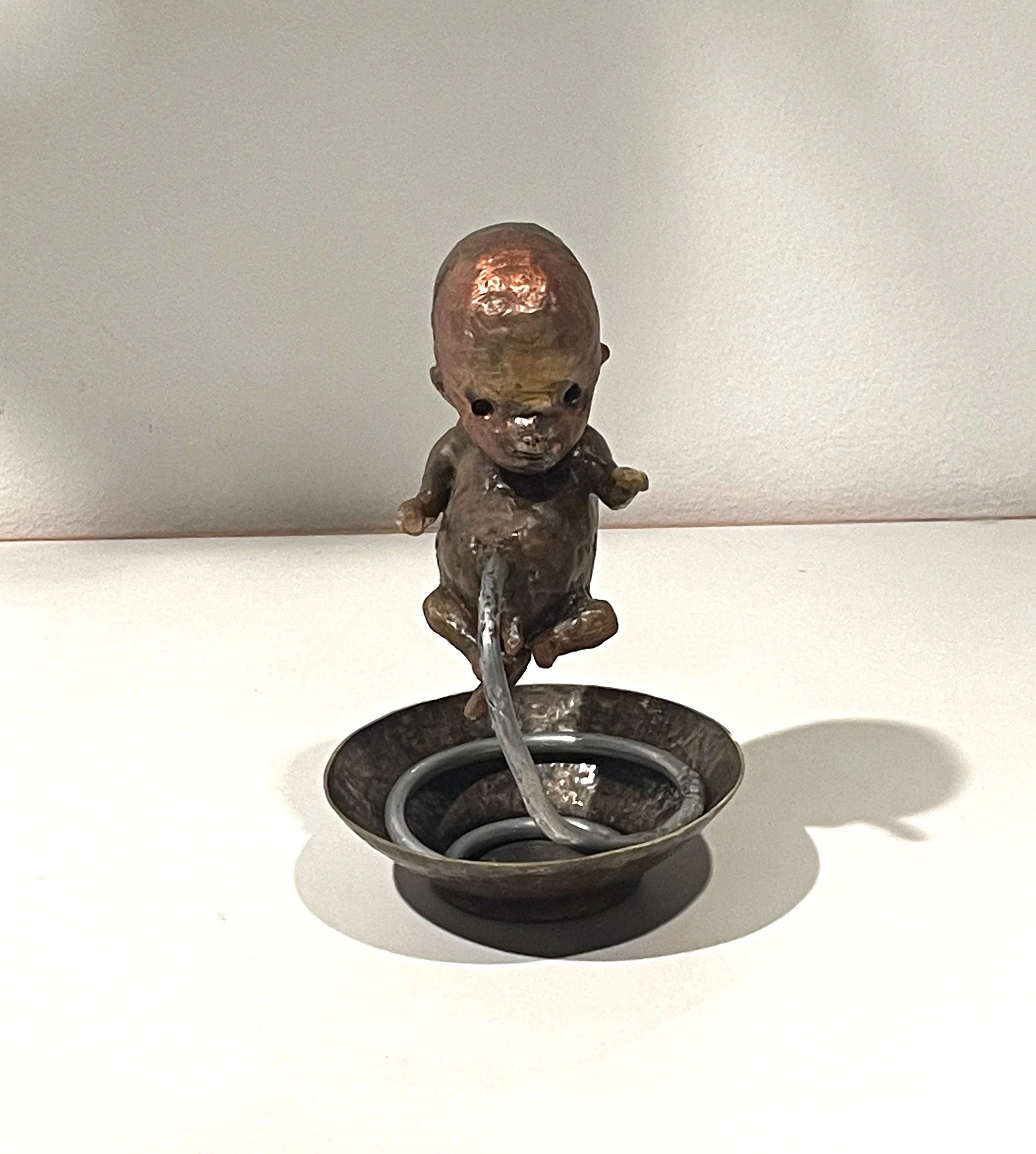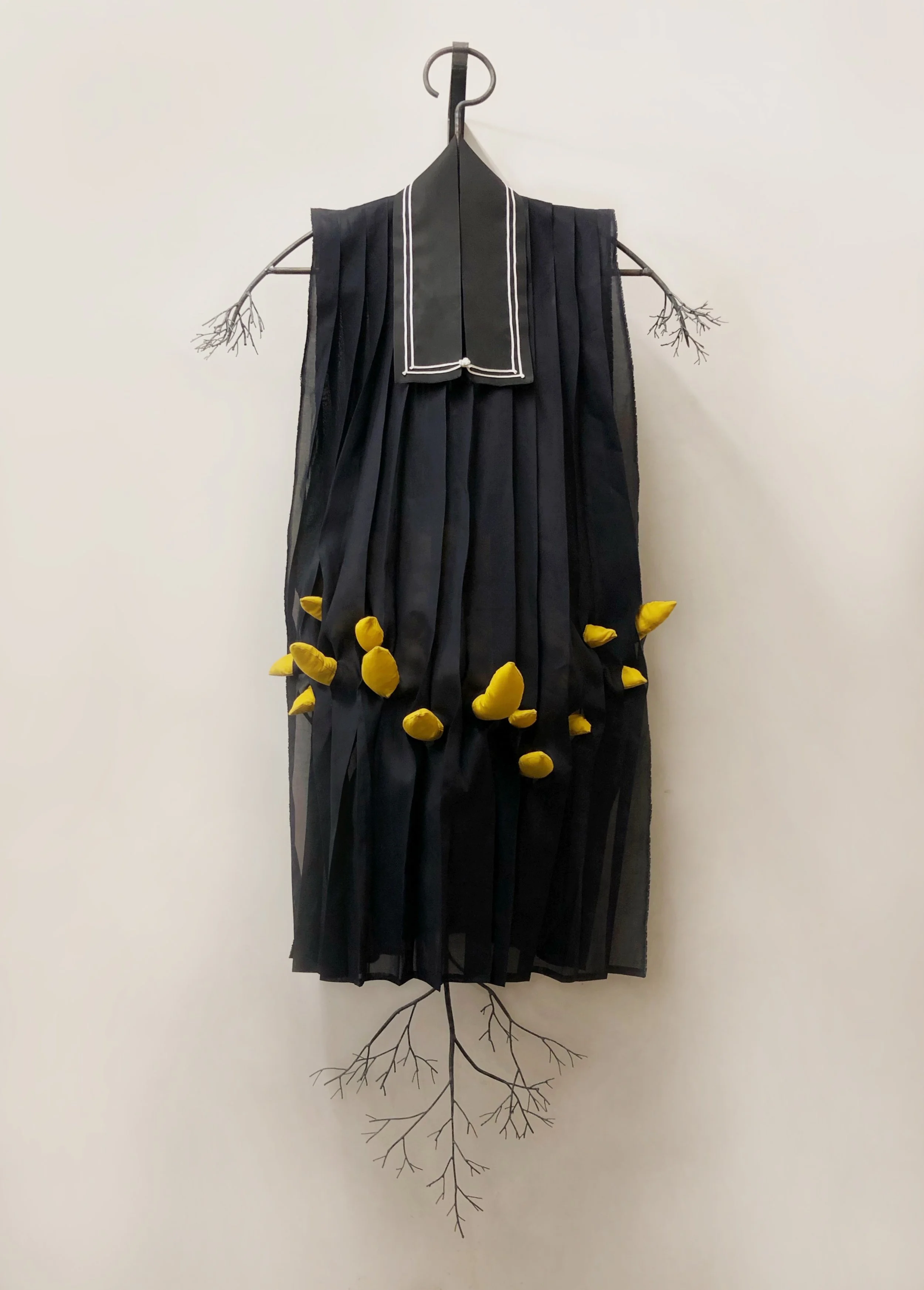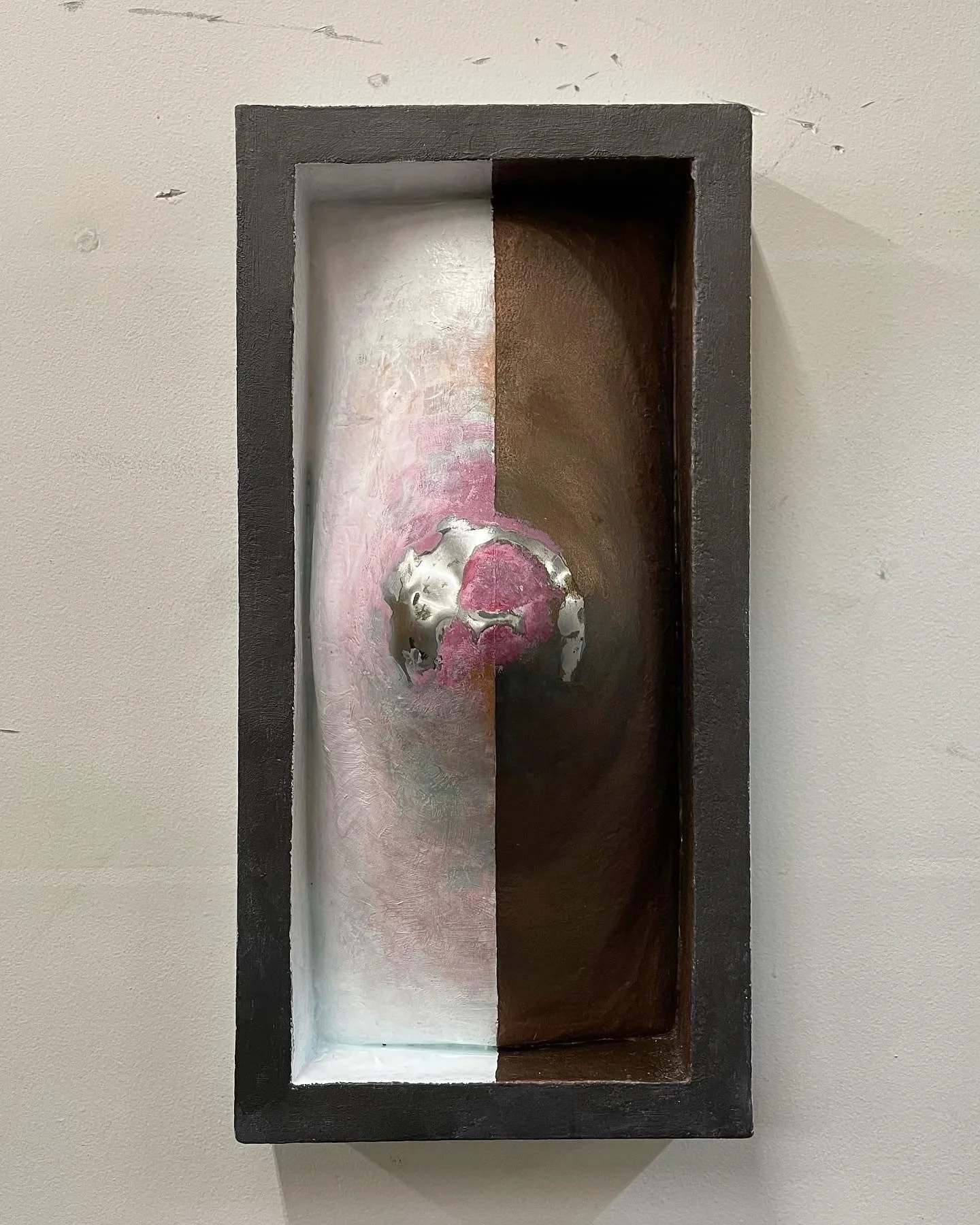What’s In a Name?
What is Your Name?
Natsuki Takauji and Haskul Lee, What is Your Name? 2020. Paper, steel, and aluminum, 6 x 3 x 3 ft.
This sculpture becomes the actual amalgam of the Counterpoint exhibition itself. There are names traversing the aircraft: one side in blue with words inscribed in white letters, the other side in white, with names rendered in different colors.
As Shakespeare queried, What's in a name?
Natsuki Takauji and Haskul Lee show us that diversity, through use of the phonetic alphabet, can unify all names, all cultures, all lives. As a result, we pronounce each name as it is meant to be pronounced, eliminating any doubt or intimidation when faced with diverse linguistic obstacles, such as differing writing systems.
Detail of What is Your Name?
The counterpoint here is that diversity can be unity, by way of a common understanding — in this case, the aforementioned phonetics. It balances all, giving us the very human and universal underside of all cultures as one reflection of the mind. Thus, the overall shape or frame of the sculpture is symbolic of said mind, the indicator of limitless knowledge through intellect — linguistic phonetics.
There is an aural component to this installation. Recordings of different voices are heard as we contemplate all of the names inscribed. The voices in the air add a degree of intimacy in embracing the identity of each life. There is a human being behind each and every name we read, as their idiosyncratic cursive monikers reflect their uniquely respective lives in small, linear strokes.
Natsuki Takauji and Haskul Lee, What is Your Name? 2020. Paper, steel, and aluminum, 6 x 3 x 3 ft.
These counterpoint sculptures also touch each other in a configuration resembling lovers embracing. In this embrace, there exists a berth, a safe haven of compassion and acceptance. The two craft configured together, symbolic of the mind, resemble a head — the dwelling of the mind — as two intents by two artists become one mindset.
Haskul Lee, Propeller Study, 2013. Steel and ball bearing, 22 x 22 x 4 in.
The base of this sculpture resembles that of a propeller, the traditional power that propelled aircraft before jets. This propeller base is a reminder of the whirlwind of individual lives here on earth, and how each name is the propellant that connects our individuality to one prospective mind: understanding. acceptance, peace. Lee also set a precedent for this propeller theme a decade ago, with his propeller study from 2013. The propeller sits elegantly, almost humbly, on the edge of a black cube. The journey of the blade has yet to begin.
Haskul Lee, The Creation of Adam, 2023. Copper, brass, aluminum, and wax, 7 x 4 x 4 in.
Lee's work is largely concerned with biology, the figure, the human form. It is the human form either represented literally, as The Creation of Adam or Fallen Adam — or more expressionistically, as the series of wall sculptures, such as Crave-Being and Epicene Being. Both series explore the potential of humanity. The fetus in The Creation of Adam calls into question the frailty of our beginnings, while the death of Adam juxtaposes the grown man and the baby together, an amalgam of birth, living life and death. The Crave and Epicene series present the body as an abstracted and androgenous mystery — a skin, a sheen, of living awareness, struggling painfully through the inner elements of biology and the outer elements of environment to survive. The Epicene series also resembles bread, or cake, in the baking pan, ready for consumption. But in this case, it is for our informed intellectual consumption, by way of vision and mind.
Natsuki Takauji, Goodbye My Chrysanthemum, 2020. Steel, fabric, and LEDs, 70 x 30 x 18 in.
Takauji’s Goodbye My Chrysanthemum could almost be the birth mother to Lee's Creation of Adam piece. The dress contains many protrusions resembling bananas (bear fruit and multiply), but given their general location on the dress, they seem almost to represent a cluster of phalluses. The light bulb above the cluster could be the gestating result of female and male communion. The heart of femininity bears light on humanity by way of self-perpetuating birth. In Japanese culture, the chrysanthemum is a symbol of the Imperial Family. The title Goodbye My Chrysanthemum may also imply Takauji's farewell to Japanese traditions, as she and works and lives primarily in the United States. Saying farewell to one culture promises the birth of another.
Takauji's work deals with the absence of the human. The human was present, but now, leaves its imprint by way of manipulating and creating levels of invention, rendering emulations of the human spirit in the form of etchings, or sculptures, or even a dress.
Haskul Lee, Epicene Being / Half and Half, 2022. Steel and acrylic, 14 x 7 x 4 in.
These two artists are counterpoints in how they envision the human — as Takauji will infer, Lee will engage. Takauji observes and manifests a more impartial, yet detailed, commentary on the human spirit, while Lee emulates and reconfirms more directly the physical experience of the human spirit. Takauji creates the human without as Lee creates the human within.
Natskui Takauji and Haskul Lee: Counterpoint
Curated by Francine Rogers
City College of New York
Morris R. Cohen Library
April 13 to May 18, 2023

